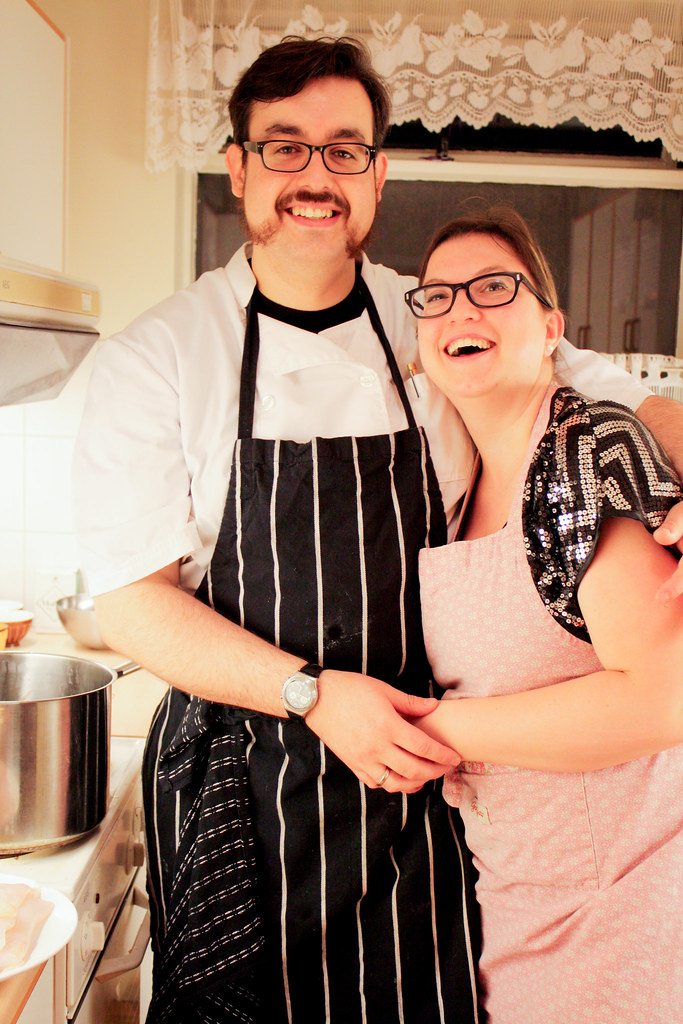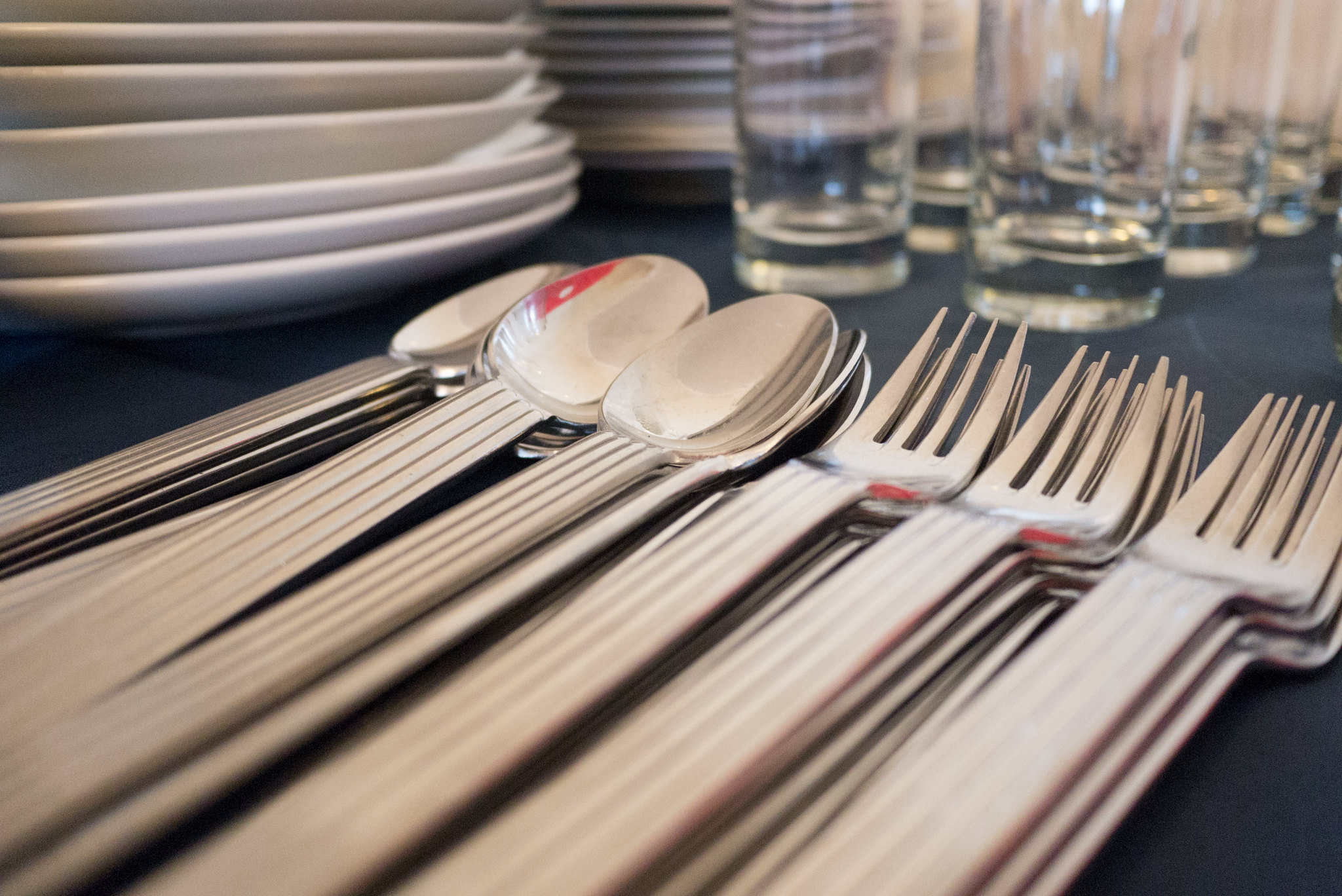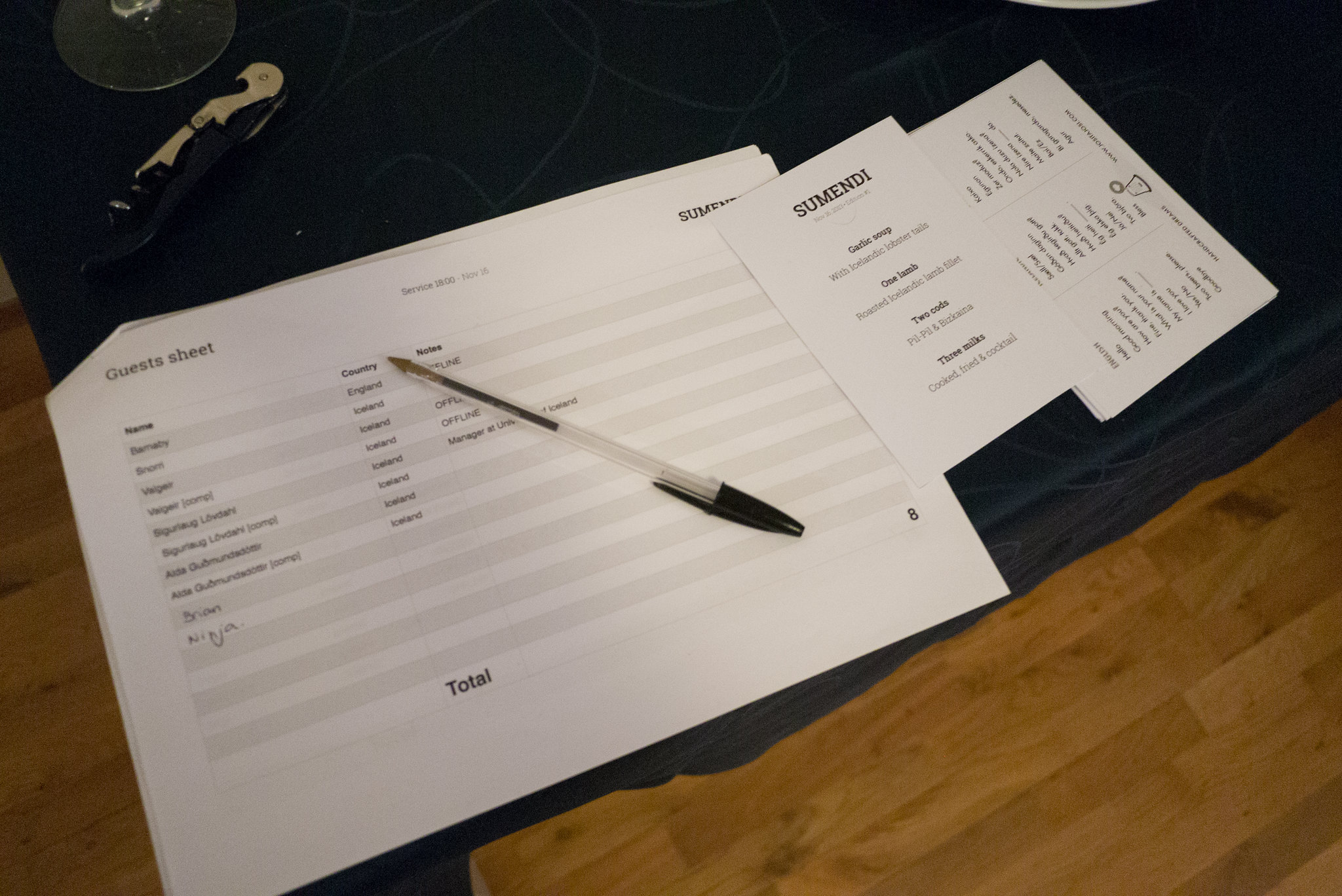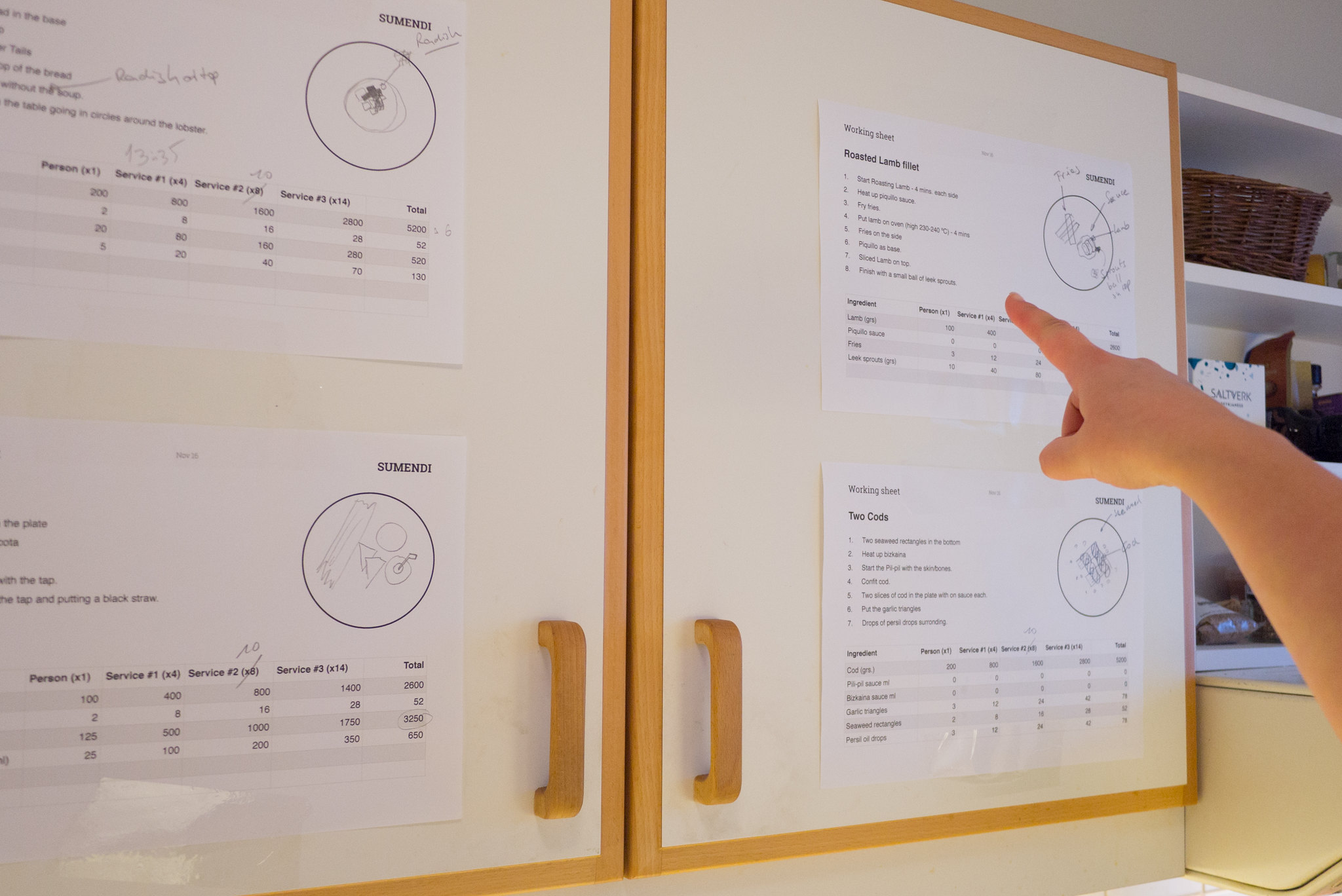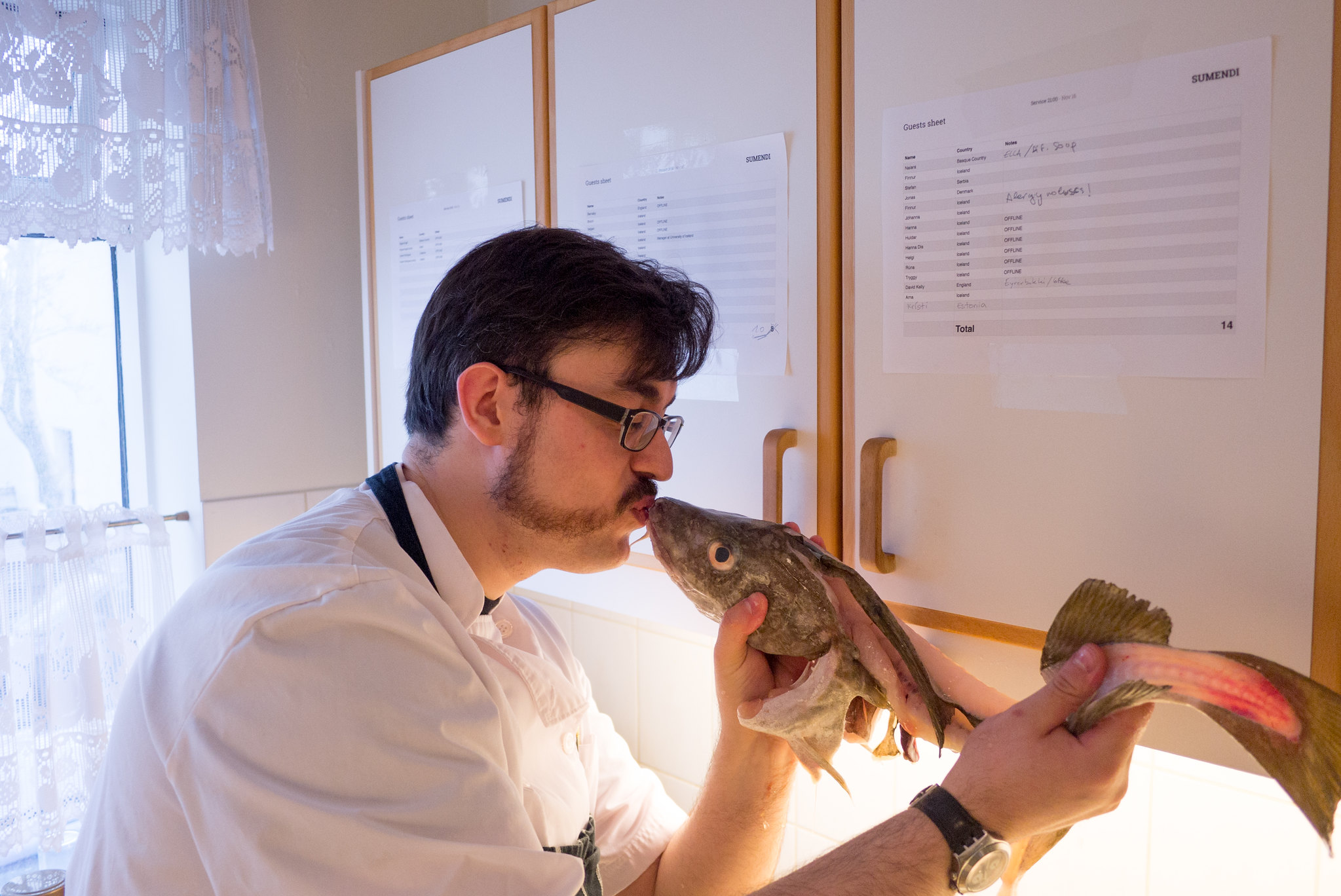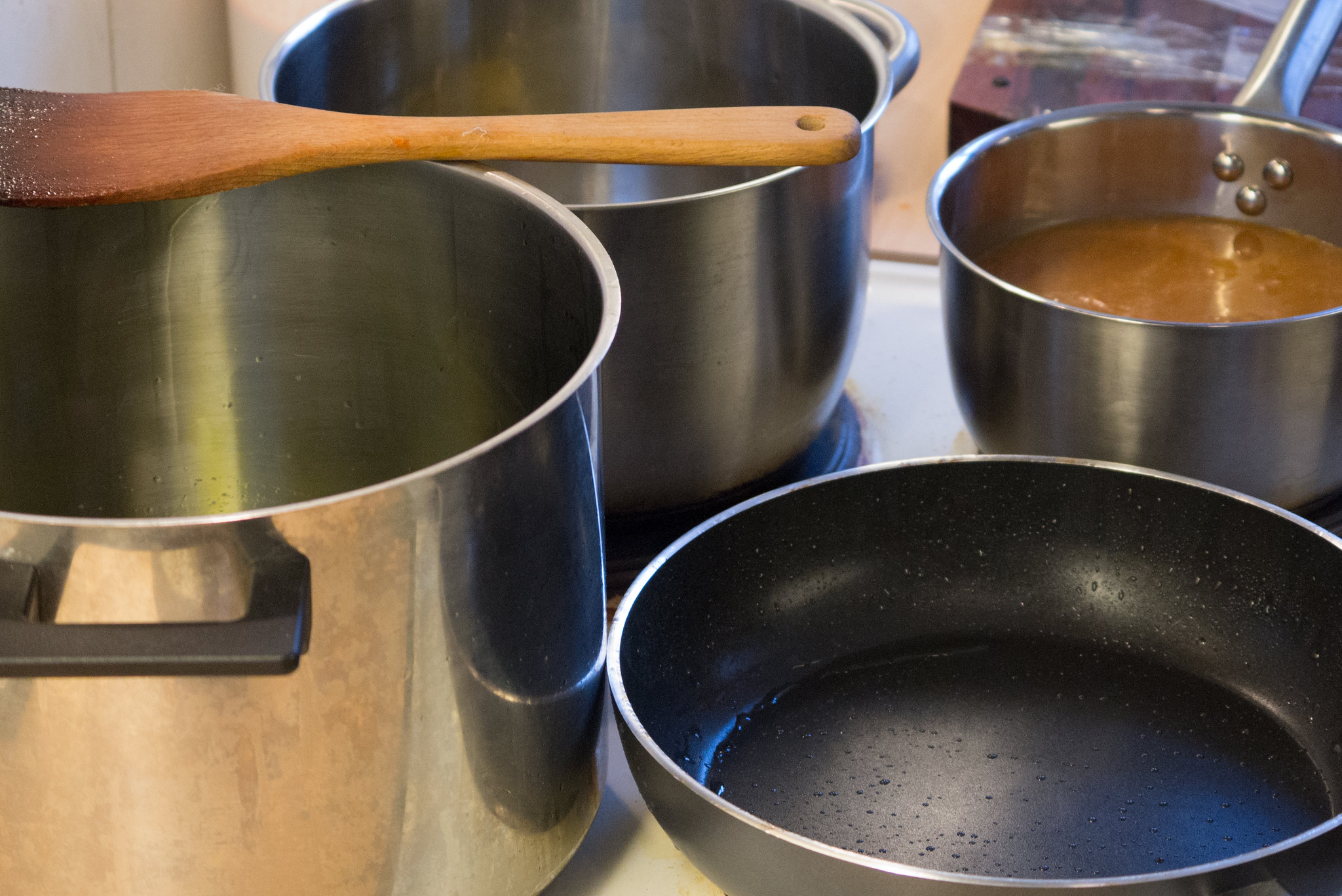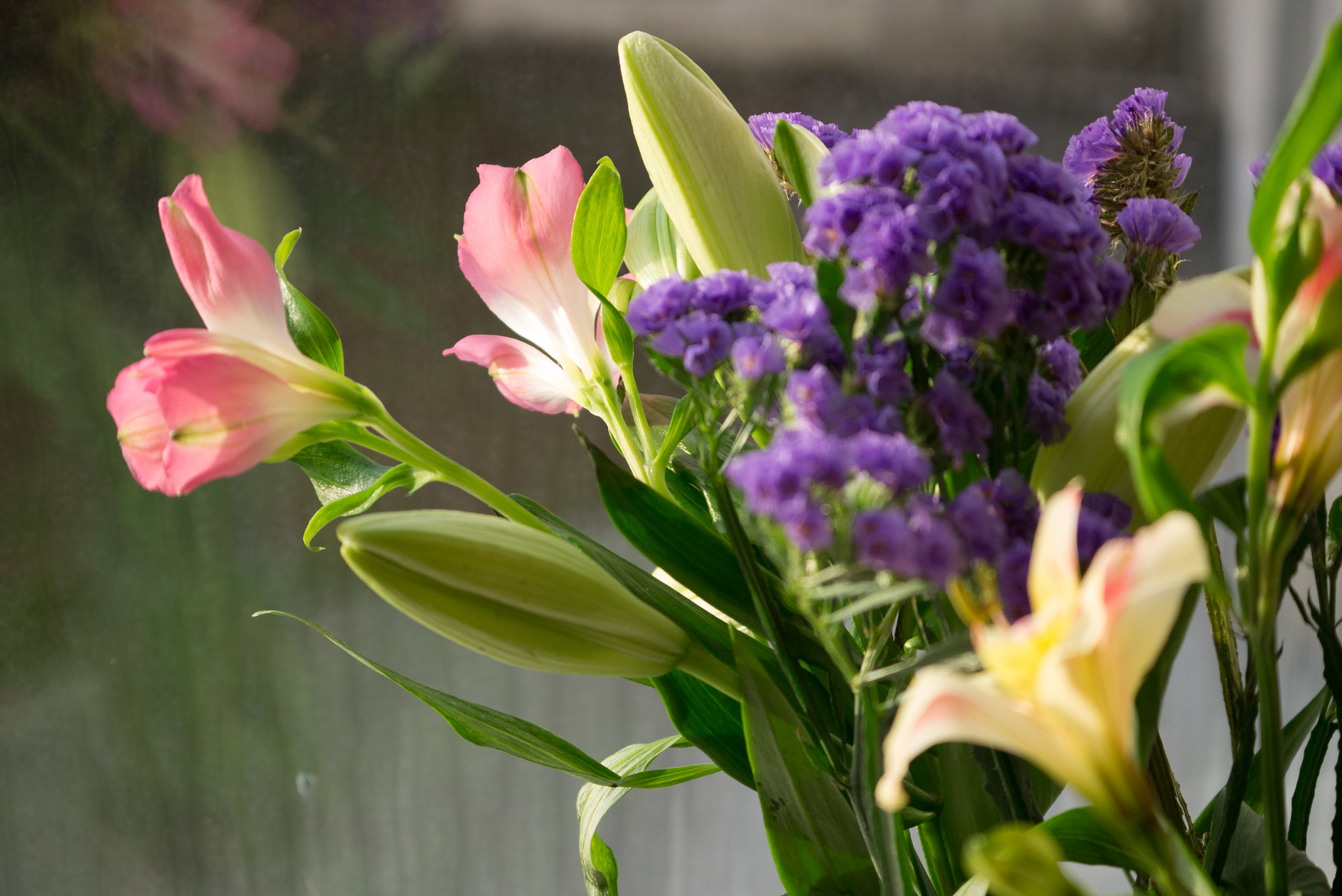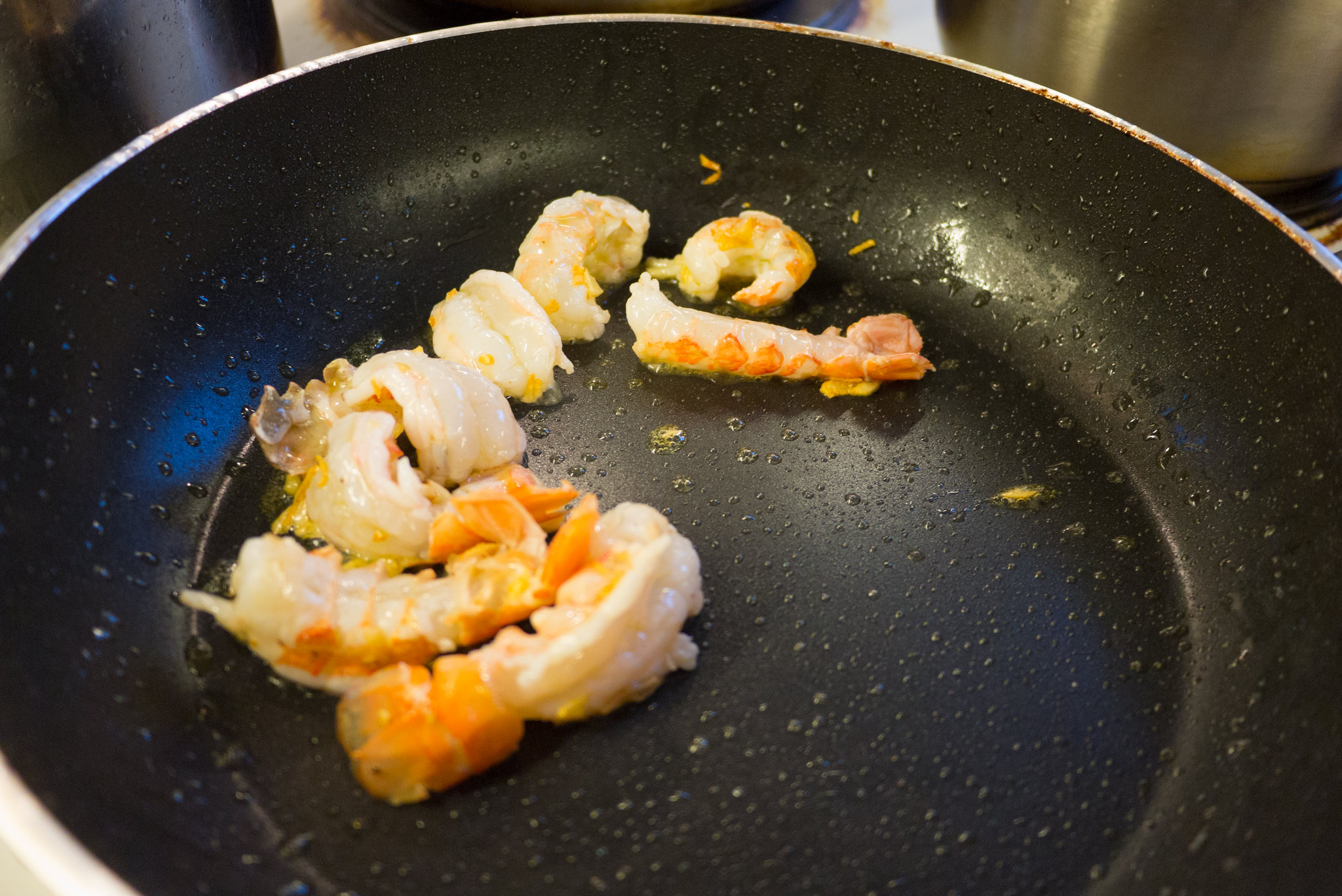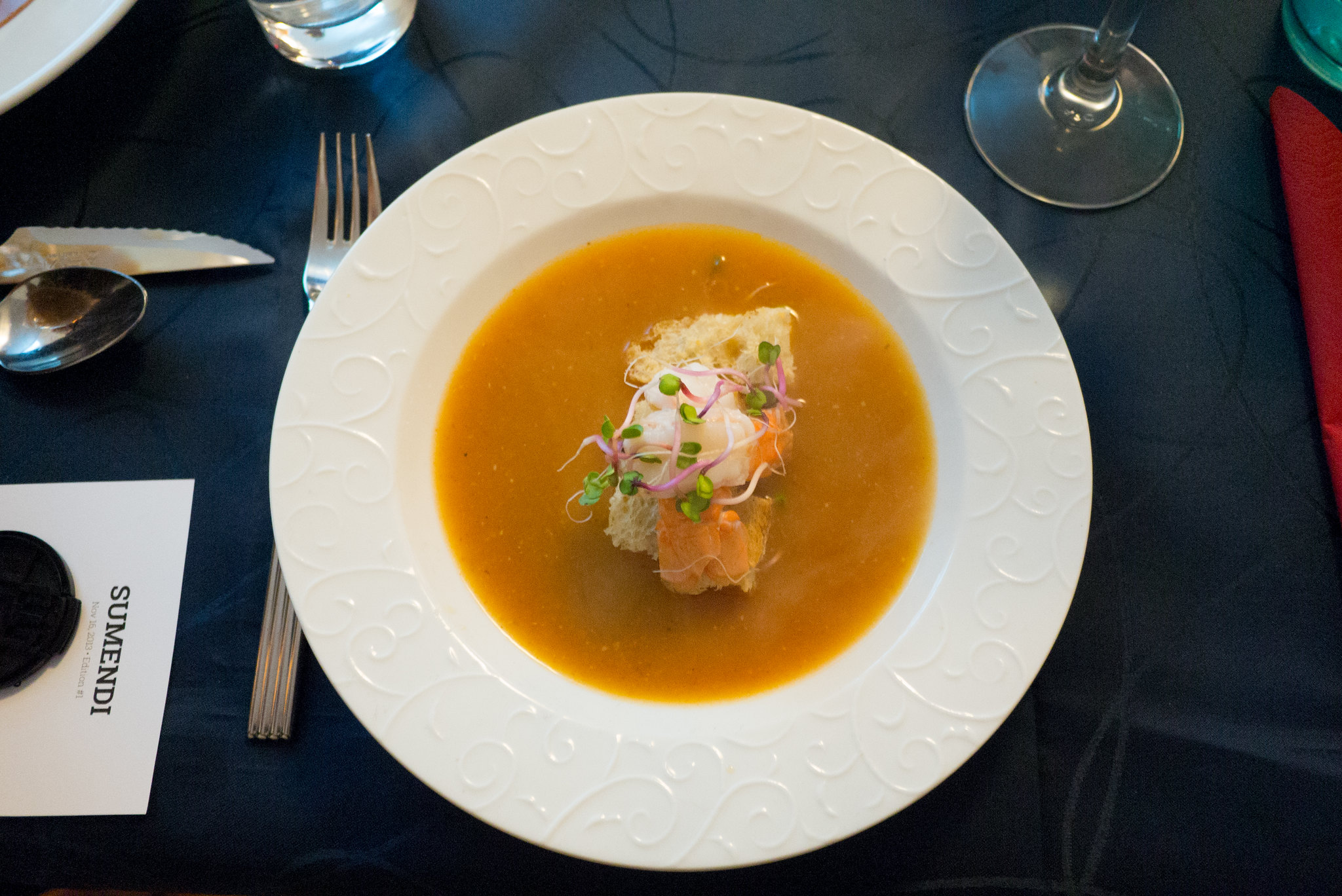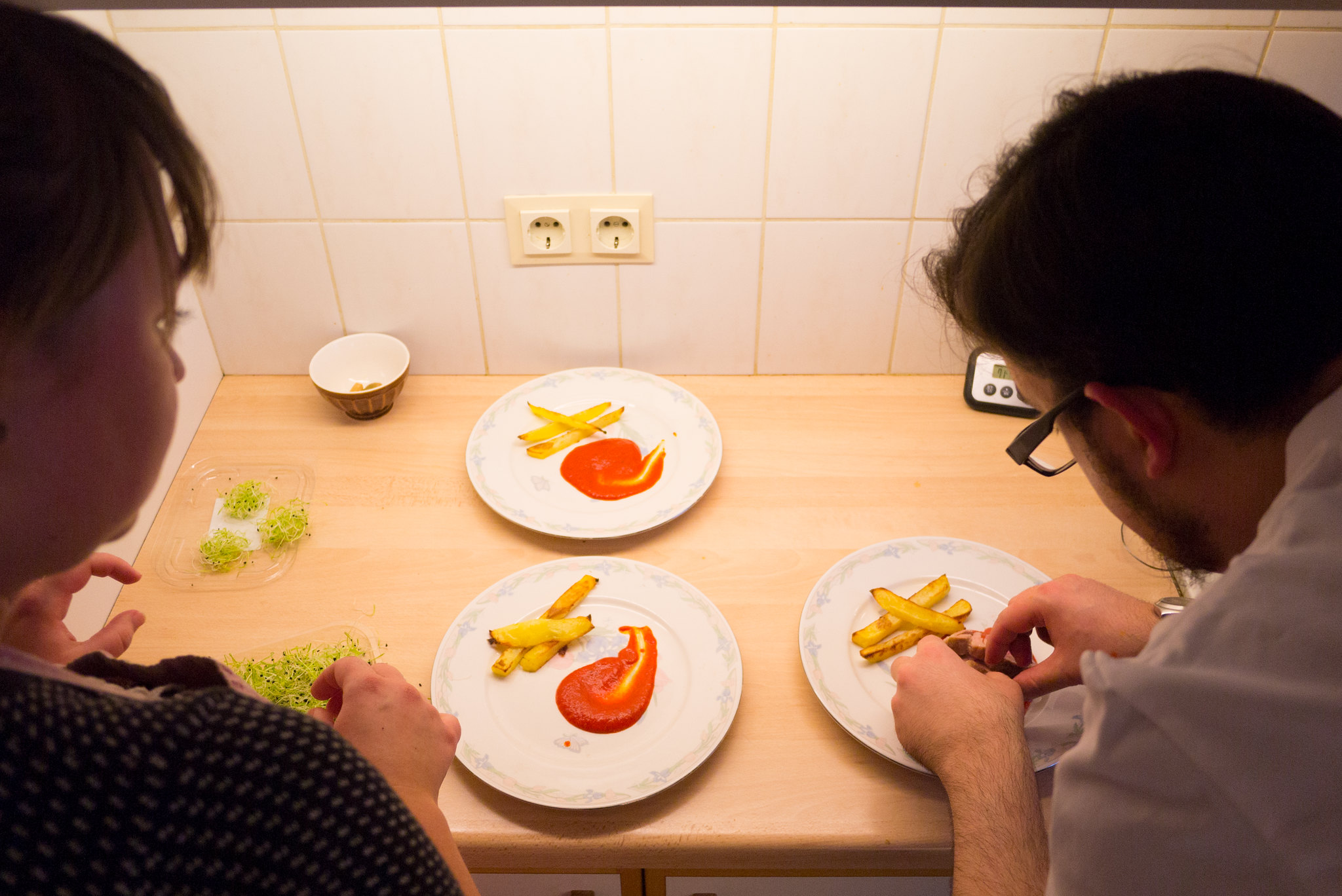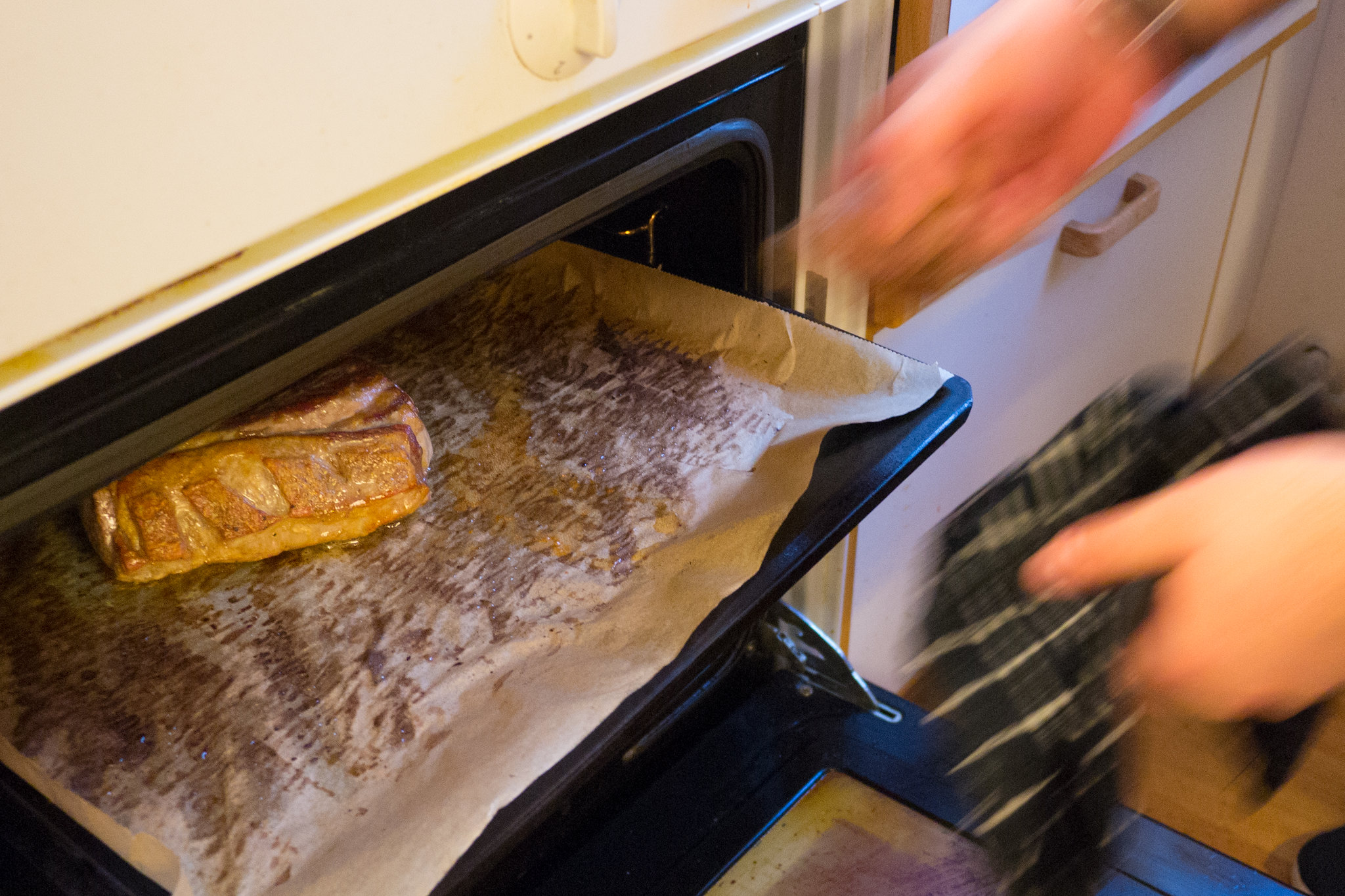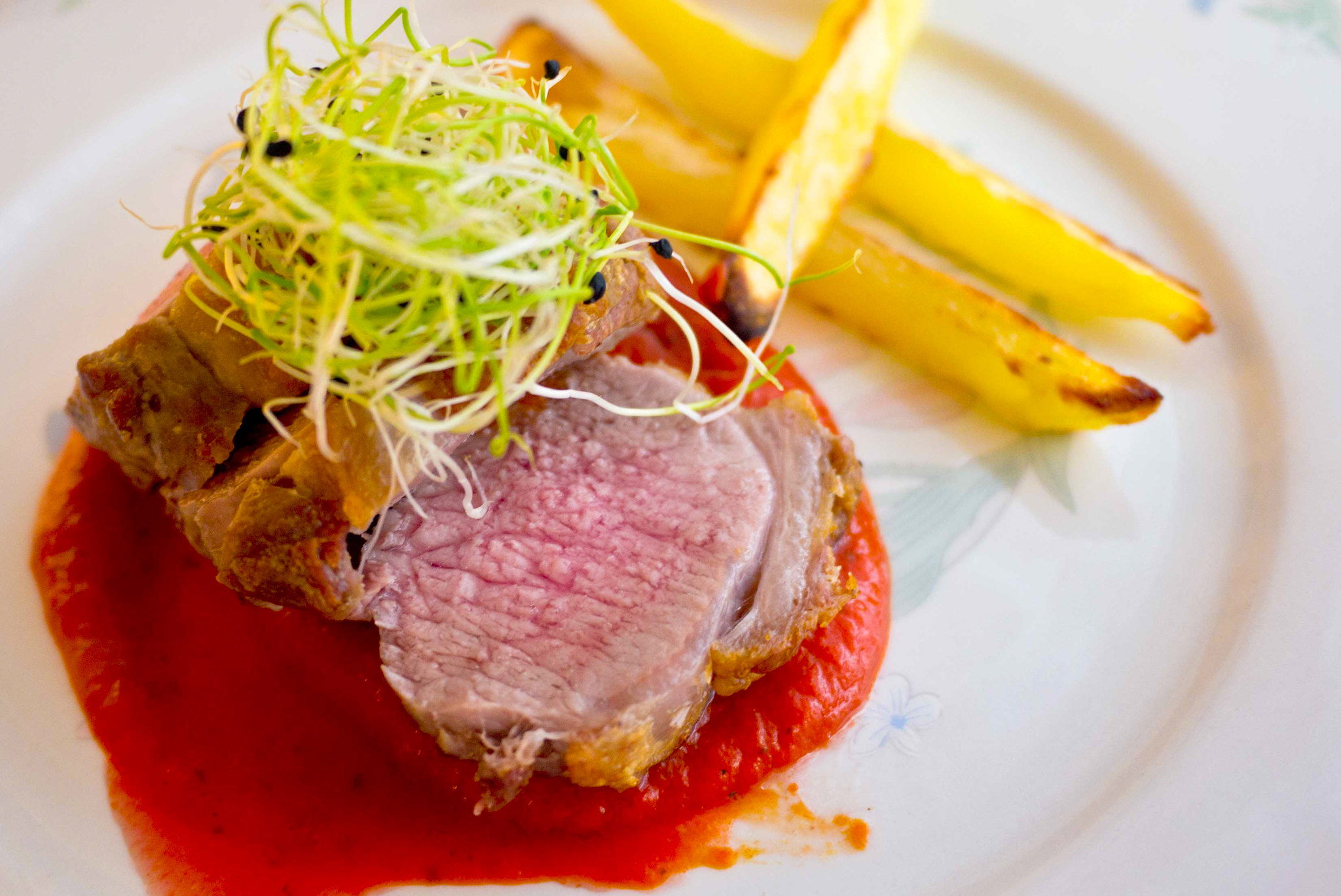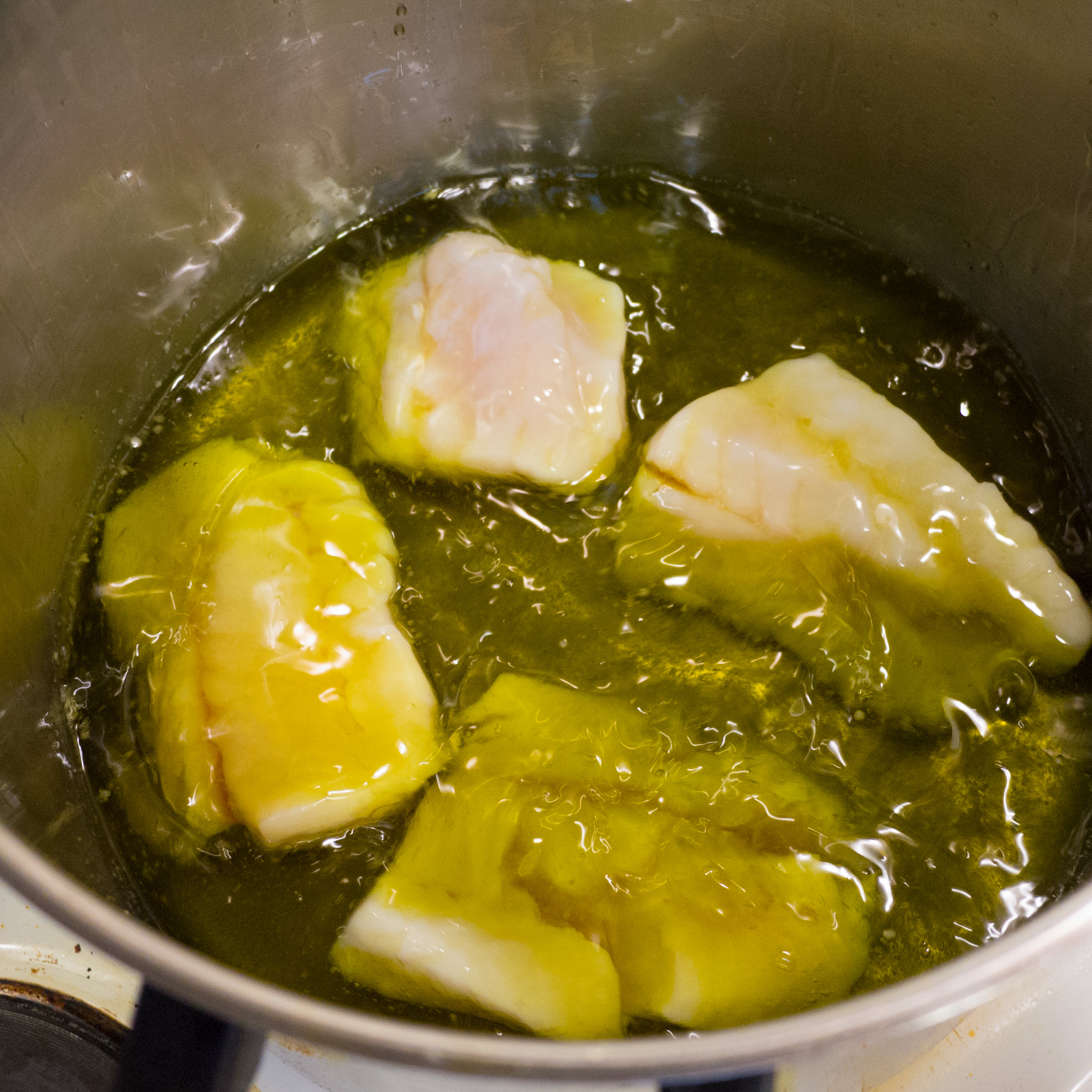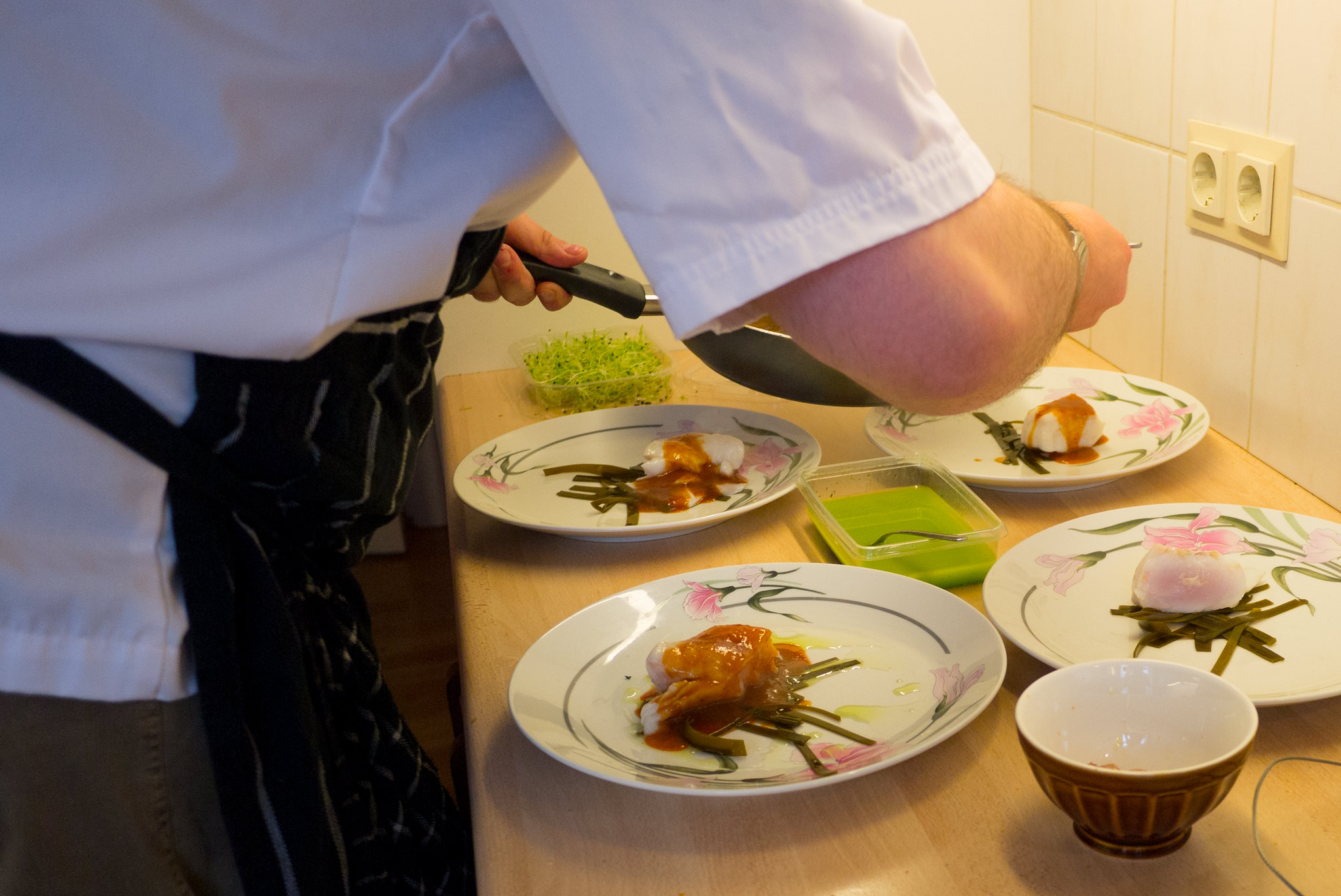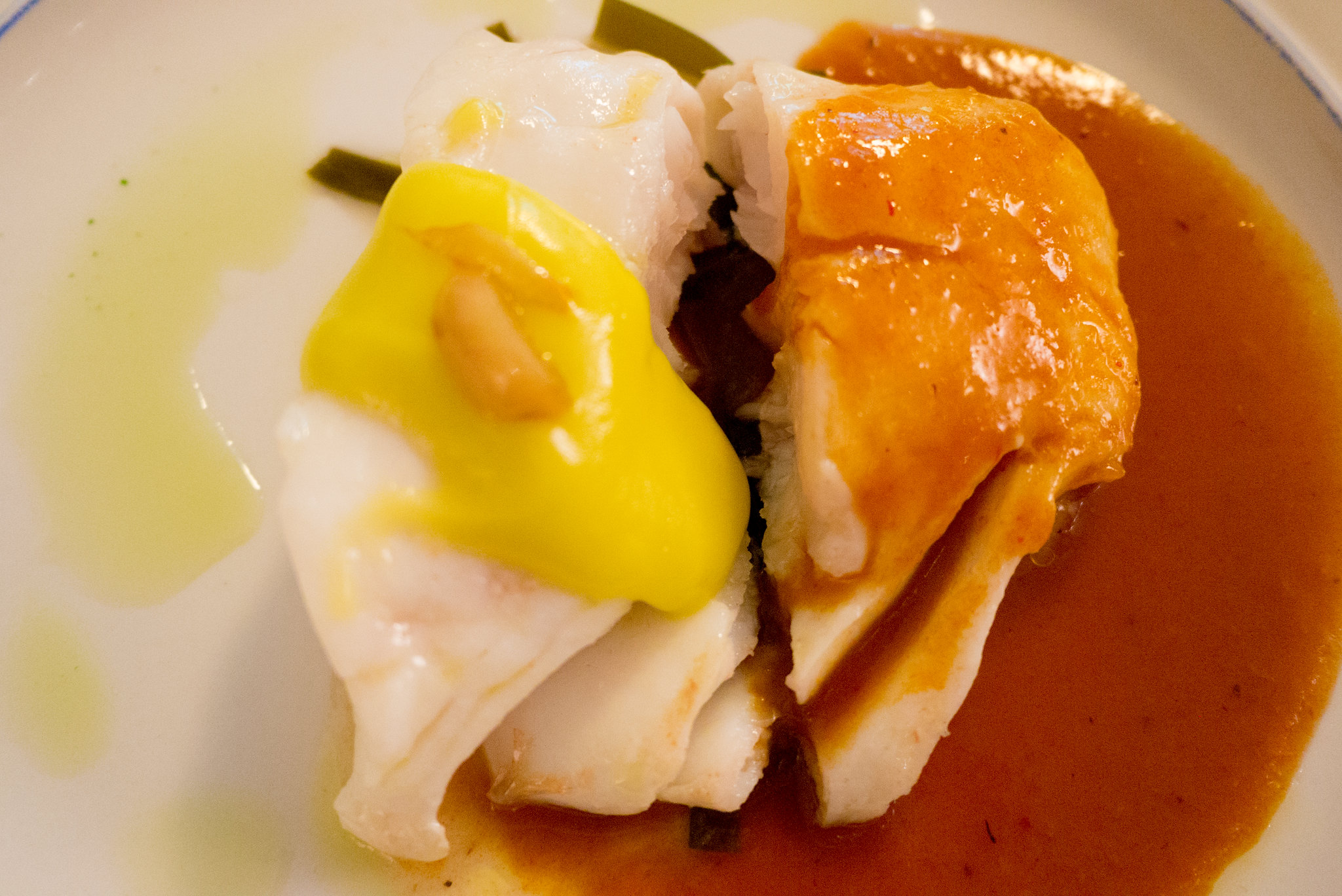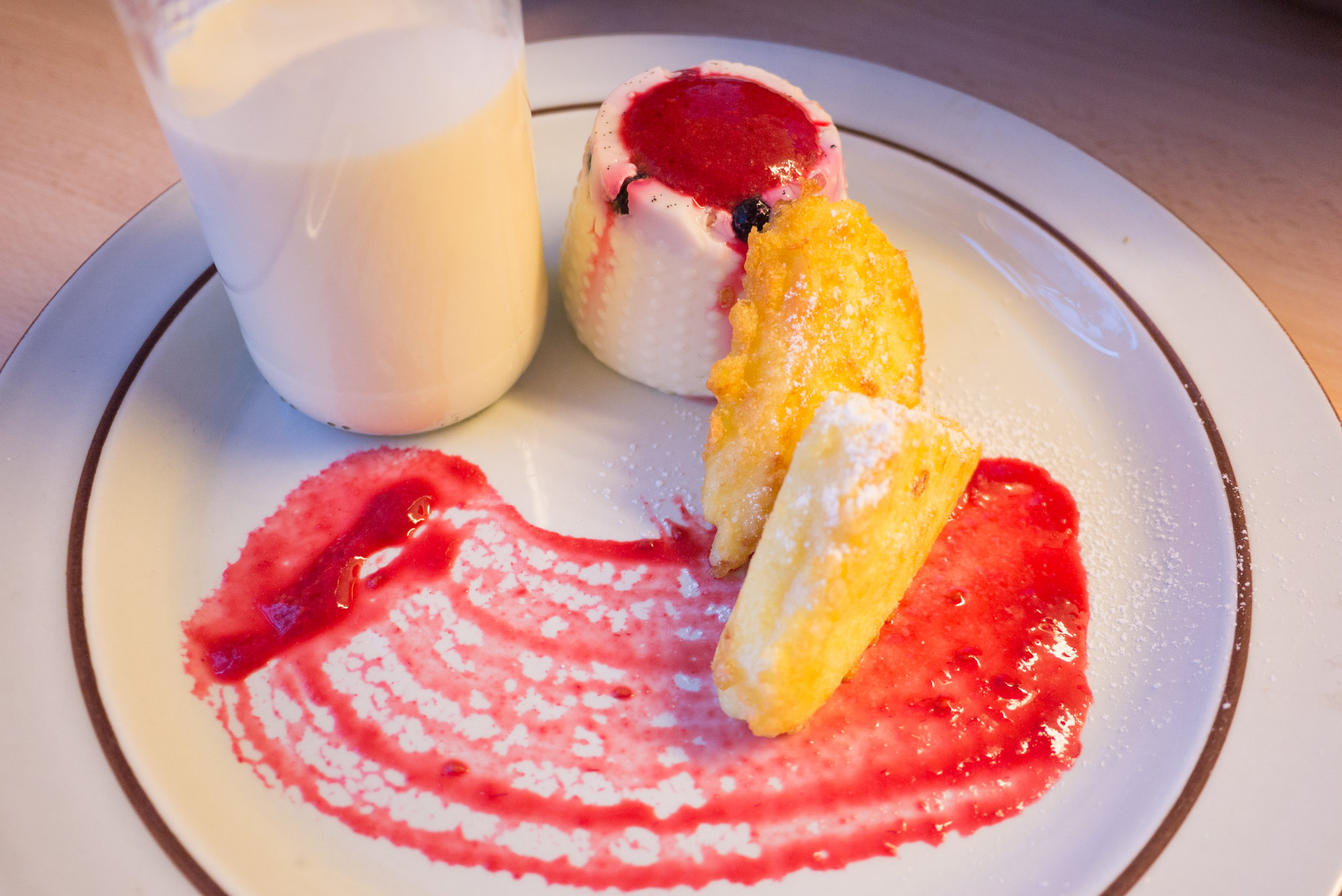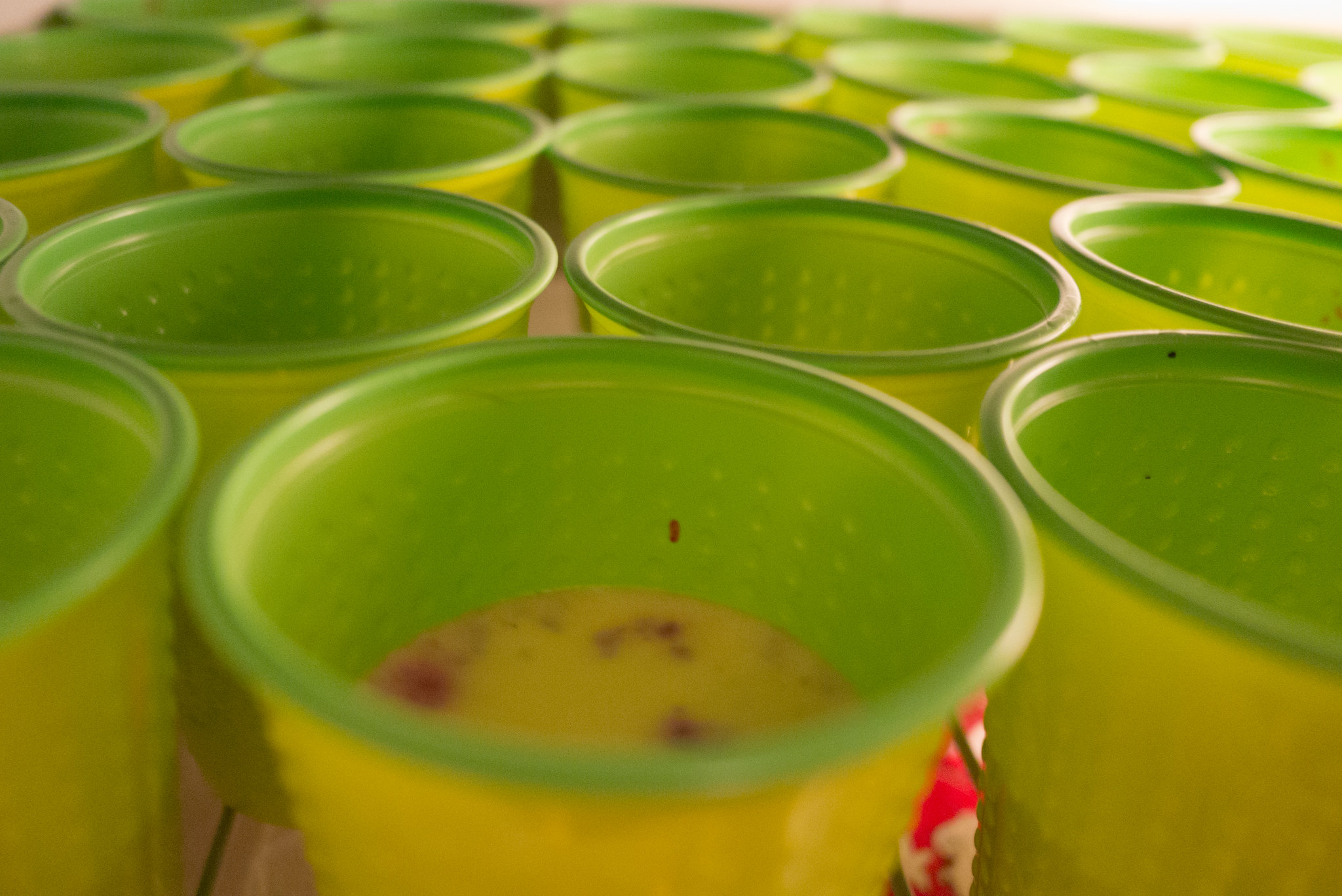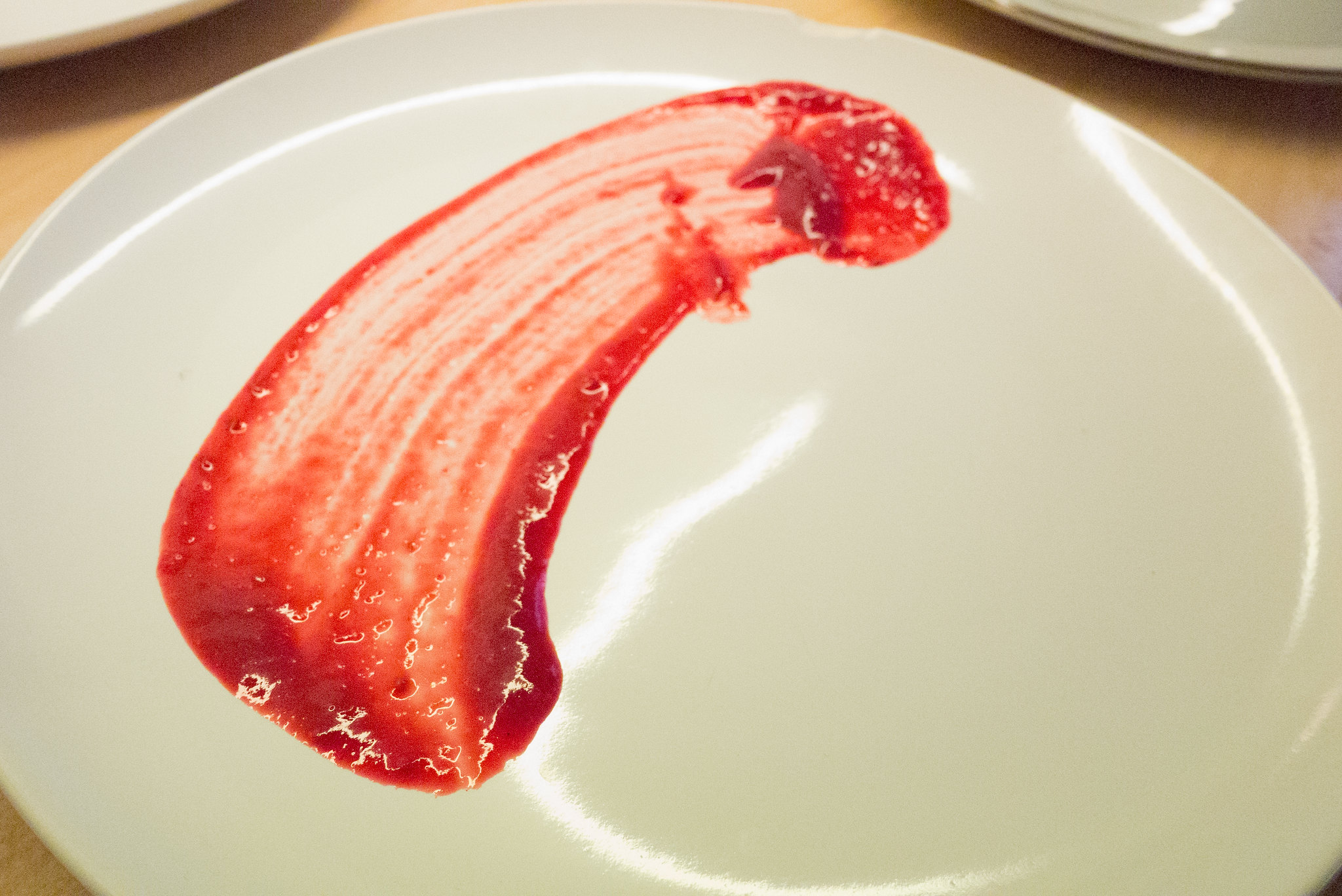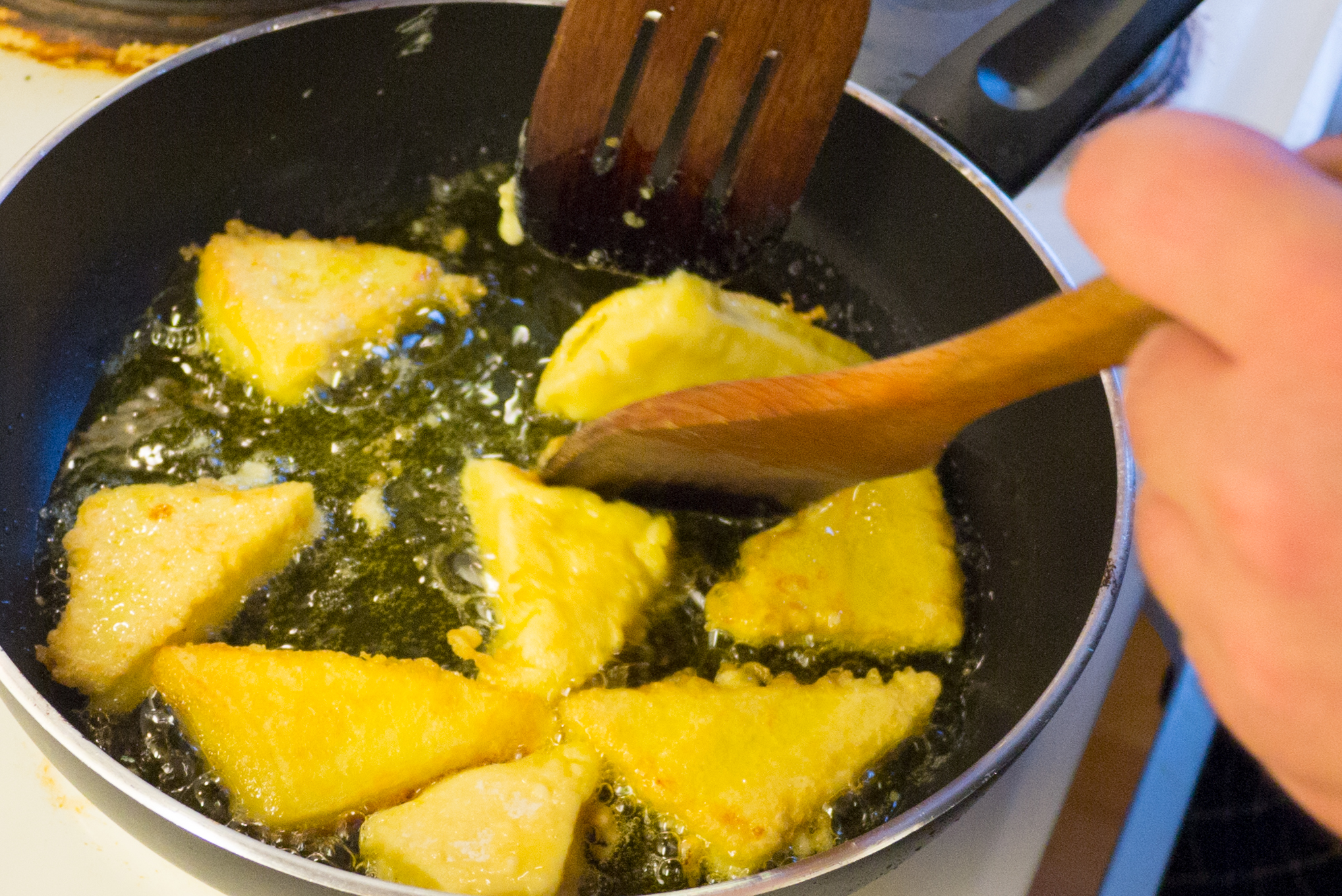Sumendi #1 · Beginning
This is a small summary of some of the amazing things that happened in Sumendi's first edition.
Celebrated on Restaurant Day, 16 November 2013.
Garlic Soup With Icelandic lobster tails
This is a plate that has been a permanent fixture in the diets of modest peasants, farmers and workers for centuries. Garlic was —and is still today— despised as a low-class ingredient and we can find written references of this contempt that go as far as 1615, to one of the most universal books, The History of Don Quixote:
"Eat not garlic nor onions, lest they find out thy boorish origin by the smell;"
— Chapter XLIII. Of the second set of counsels don quixote gave sancho panza
"Son of a bitch," said the duenna, all aglow with anger, "whether I'm old or not, it's with God I have to reckon, not with you, you garlic-stuffed scoundrel!"
— Chapter XXXI. Which treats of many and great matters
There are infinite recipes of Garlic Soup, but tradionally most of them involve thick chunks of bread floating in a garlic infusionated chicken broth. That is actually the canonical definition of soup in spanish: "Piece of bread soaked in any liquid". However we know that many people don't like the soggy texture the bread gets if it's soaked for too long.
To prevent that, we triturated the usual garlic soup recipe and set a few pieces of the best freshly toasted bread from Sandholt in the bottom of the plate, covering them with two nice icelandic lobster tails —a very icelandic ingredient— and radish sprouts from Ecospira, a small company in Hafnarfjörður focused in creating high quality sprouts.
Then the plate was delivered to the dining room and the soup was served in front of the customer. And, in the most Pythonesque tradition, there was much rejoicing.
First service (13:00)
We knew that first service should be smaller than the others so the staff can detect all the small problems and make the experience as smooth as possible.
What we didn't know is that we'd have the inmense luck to fill the service with people as nice as Miguel Angel (a professional chef from Basque Country, woot!) Luciano, Xavier and Lorena. It really felt like a lunch with friends.
Everything went very well with the only exception of the Pil-Pil, due to my miscalculation on the proportions for such a small service, but they had the deference to not even mention the issue. Thanks guys!
Roasted Icelandic lamb fillet with Piquillo peppers sauce
Stews, roasted and grilled portions of lamb meat from the Latxa and/or Carranzana breeds (native to the Basque Country) and their crosses, had long been a permanent staple of the Basque diet.
Specially apreciated are the lambs known as milk-fed lambs. They must be slaughtered at an age of between 21 and 35 days. These lambs are fed only with maternal milk, reared in a natural environment, and slaughtered when they have a dressed weight (with head and innards) of between 5-8 kg, which results in tender succulent meat with a pearly white to pink color.
Icelanders have had a long standing relationship with their lambs too. In fact, réttir, the annual round-up happenning every fall, where farmers summon a team of shepherds and ride into the mountains to collect their sheep, is still one of the most important events in countryside Iceland.
We're deeply proud of being part of two cultures that have known how to protect the local breeds for centuries, incorporating them in the culture and social habits and giving them the respect they deserve. And to celebrate that fact and let the superb quality of the icelandic lamb shine, we picked this simple recipe as one of the main courses.
We started by warming up a pan to the right temperature to give give the fillets a fast, perfect sear. Then the heat was deepened with a few minutes in the hot oven. When you work with great materials is easy to have a great results: fresh leek sprouts, great potatoes, piquillo peppers sauce for the setup and Icelandic Lamb Fille roasted on its own grease.
Second service (18:00)
Another service packed with new and old friens: Barnaby, Snorri, Valgeir, Brian, Ninja, Alda & Sigurlaug and her respective companions honored us attending Sumendi's second service.
Bego was in charge of the dining room during the whole day and as she was introducing and explaining each one of the plates and their history, she found time to answer the general questions that our guests had about our the basque culture.
We wanted to make the experience as complete as possible and as visual complement to the food, we projected a collection of historical and recent images of the Basque Country and Iceland in one of the room's walls. Once again we were surprised by the similarites between our two nations.
During the three services a camera was recording the pictures every few seconds. With all these pictures we have made one timelapse for each service —like the one you can see next to this paragraph— in a few minutes a summary of a 2-3 hours experience. It's not like being in Sumendi but we think is a good way to glimpse the general mood.
This was one of the most relaxing services of the day. The size (9 guests) made it perfect to keep a nice pace, get the feedback and comments from the guests and have time to enjoy the cooking in the kitchen and the food in the dining room. Thanks everybody!
Two cods: Pil-pil & Bizkaina
We are sea people. The first contact between our two nations was the direct consequence of fishing activities. Basques were hunting whales and catching cod in Icelandic waters as early as 1610. With time we started to understand each other better and even created a shared pidgin. There were some bumps on the road but, hey, no hard feelings.
Basques worship cod and have made long journeys to catch it. We learned from nordic visitors how to dry fish and we teached them how to salt it, using the same techniques we were using already for salting whale's tongue. Icelanders love too this fish and it has been one so economically and culturally important that it was portrayed on their coat of arms for centuries.
To celebrate this shared passion, we chose two of the most popular cod recipes in the Basque Country: Pil-pil and Bizkaina. First one is an alchemic trick made possible by the incredible gelatins contained in the cod. The fish is cooked at low temperature (60 °C) in an extra virgin olive oil confit that has been previously infusionated with garlic. As the cod is releasing its precious content into the oil, the pot is frecuenly moved creating an beautiful emulsion of a bright green color that, as one of our guests said, "is the pure essence of the cod".
Second one is firmly rooted in the unique flavor of the choricero peppers, a special type of peppers dried on strings. At many houses in the Basque Country you can see long strings of these choricero peppers hanging up on the balconies. They are usually rehydrated in warm water and used as a base in the creation of this tasty sauce.
Some weed strips (icelandic Kelp) and a few drops of Persil oil were used to finish this plate that I think is a great representation of one the strongest ties between icelandic and basque culture: cod.
Third Service (21:00)
The final round. The moment of truth. There is an old saying among chefs: "You are only as good as your last service".
Best chefs in the world are usually recognized by their innovation creating new flavours, textures and techniques. Some of our heroes —Eneko Atxa, Martin Berasategui, Juan Mari Arzak, Andoni Aduriz— are year after year in the top lists of the best restaurants in the world, creating dozens of new recipes. But one key factor of their success that goes unnoticed too often is their consistency.
Yes, it's very difficult to keep innovating constantly but we think that very definition of professionalism —and its main difference with respect to amateurs— is connected with this less fancy concept of consistency.
A gastronomical cathedral like Azurmendi will not only create very complex marvels like this Oxtail's ravioli but will serve it to 200 people per night with exactly the same quality.
And we know that is incredibly difficult. In this last service, we struggled in the kitchen to finish the dessert for 15 guests and they waited for more that we'd like to admit.
Fortunately it was at the end of the dinner and all our guests were incredibly nice people that being many of them unknown to each other, had a very good time chatting and eating together for a night.
What could be better than that? To be an invisible enabler that helps to create memories & happyness. That is what we wanted Sumendi to be… and we got it. Thanks everybody for making it possible.
Three milks: cooked, fried and cocktail.
For the grand finale we had this vision of a plate where we could play with the different states of the same substance: milk.
A brushstroke of icelandic raspberries piquant sauce served as acid counterpoint to the general sweetness of these desserts and filled the blank canvas plates are.
We started by creating a simple Panna cotta —literally cooked cream in italian— that was filled with Icelandic wild berries, very common in Iceland and the perfect filling for this great dessert.
Sitting on its side two triangles of Fried Milk were arranged. I'm pretty sure that is one of the sweet memories most people in the Basque Country can recall from their childhood.
And to crown it all… Patxaran's Milk Cocktail. Patxaran is the national liquour in the Basque Country, a version of what is commonly known in Britain as Sloe Gin. The milk was infusionated with rice, like a half-done rice pudding, sieved and combined with the liquour.
Some numbers…
And in our looted pantry…
Thanks go to...
Trausti for the helping us with the transportation, Kristi, Brian and Ninja for their general support and help as sous-chefs, David for helping with the logistics, Itsaso & Luis for the express shipment and Snorri for some great photos.
And very specially to all our guests for making this mad idea possible.
Thank you.
